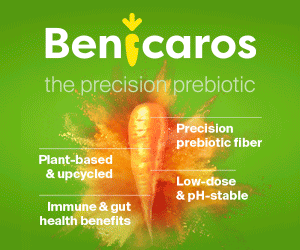The latest news, trends, analysis, interviews and podcasts from the global food and beverage industry
Hosted at the Underground Cookery School in central London, Umami Bioworks' first UK tasting event offered a behind-the-scenes experience of what may well become the future of seafood. Led by CEO Mihir Pershad, the event brought together industry guests and media in an intimate setting to sample the company’s cultivated white fish and caviar.
The session wasn’t just about flavour, it offered a comprehensive briefing on Umami’s long-term vision, technological approach and the challenges of scaling cultivated seafood from pilot phase to plate.
Founded in 2020, Umami Bioworks is focused on solving what Pershad described as one of the world’s most urgent protein supply challenges – overfishing and the declining viability of wild-caught seafood species. “Unless we solve how to make these kinds of products a different way, they may well disappear from our plates in the next 10 to 15 years,” he said, citing Japanese eel and bluefin tuna as prime examples.
The company’s platform is built around optimising and industrialising cell culture for seafood. Using mesenchymal stem cells, the team can differentiate between fat and muscle cells to achieve desired nutritional and sensory profiles. Blending cultivated cells with plant-based components, they aim to offer structured whole cuts rather than only minced formats.
Pershad explained that Umami’s strategy focuses on creating ingredients that perform and taste like conventional seafood, while avoiding the environmental and health drawbacks. “Nobody really goes out of their way to eat microplastics and heavy metals,” he said. “If we can remove some of those negatives and still produce an experience people already enjoy, that’s compelling.”
The company’s manufacturing strategy does not rely on building massive factories. “We don’t want to be the manufacturer ourselves,” he said. Pershad highlighted that Umami’s strategy is to work with co-manufacturing partners, because customers will need help to actually make production work at scale. The start-up has already partnered with Malaysia-based Cell AgriTech for pilot-scale (200-litre) production runs and is aiming to eventually scale to 10,000 tonne-scale distributed sites.
The tasting experience
The highlight of the session was the tasting itself – offering guests the chance to try Umami’s cultivated white fish in a fish-and-chips format and two samples of cultivated caviar, one plain and one served canapé-style.
White fish
The white fish, served with chips and tartare sauce, came close to traditional fillets in appearance – clean, neutral-toned and gently golden. Its taste was impressively mild and versatile, with none of the overtly 'oceanic' or artificial notes.
However, I felt the texture could benefit from further refinement. While the flavour and aroma of the cultivated white fish were on point, the fillet didn’t quite replicate the flakiness of conventional white fish. The texture leaned more towards being slightly rubbery, rather than naturally breaking apart under the fork. That said, the Umami Bioworks team acknowledged this as an area for improvement, sharing that texture remains a key development focus and that work is ongoing to achieve better fibre alignment and a more familiar mouthfeel.
“Texture is the biggest thing," a team member admitted. "We’re still trying to get a little bit flakier, more alignment of fibres… definitely a work in progress."
"We're looking into a novel process using existing machinery that can create the fibre alignment needed for that natural flakiness."
Caviar
While the white fish highlighted Umami’s focus on creating a versatile, everyday option, the caviar gave a taste of what the company can do at the premium end of the market.
The caviar avoided the dense, popping texture typical of plant-based imitations and instead mimicked the soft and creamy mouthfeel. “We’ve retooled it… using a different mix of ingredients and a different production process to give you that same melty texture you get with conventional caviar,” explained Lou Kutzler, Umami Bioworks’ culinary lead.
Pershad also stated that caviar is trending among Gen Z – driven in part by TikTok influencers pairing it with unconventional snacks like Doritos. “People are buying it for the experience,” he observed. “They want indulgence, but they also care about the ethics and traceability.”

Strategic outlook
Despite the buzz around cultivated meat and seafood, regulatory hurdles remain a significant barrier – particularly in the UK and EU. While cultivated chicken and beef have received approvals in the US and Singapore, seafood is still waiting its turn. Umami is already in review for pet food products in Europe and sees that route as a faster-to-market pathway – leveraging the novelty and nutrition of cultivated seafood for premium treats.
For human food, the route to market will likely be through the foodservice channel first, in line with the company’s go-to-market strategy. Restaurants offer a more flexible and feedback-rich environment, allowing rapid iteration, limited batch runs and direct consumer engagement.
If the London tasting was any indication, fish counters of the future might look very different – and at the same time, very familiar – as innovative start-ups like Umami Bioworks continue to make waves, changing the game for seafood as we know it.

















.jpg)
